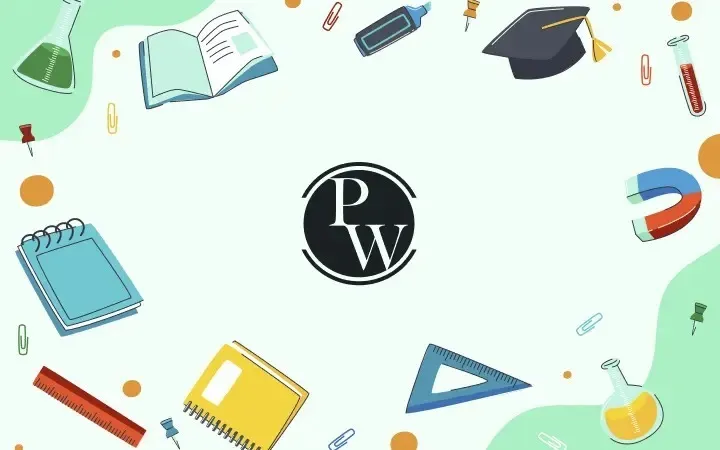
Mistakes to Avoid While Preparing for UCEED, CEED, NIFT, and NID: Since the landscape of design education has tremendously increased in the last few years, more students have gravitated towards it. The various design courses and later job opportunities have lured candidates to pursue these courses. Admission to courses such as B.Des, M.Des, etc is through UCEED, CEED, NIFT, and NID entrance exams.
Preparing for entrance exams like UCEED, CEED, NIFT, and NID can be both exciting and overwhelming. These exams require a combination of creativity, technical skills, and time management. However, many students often make avoidable mistakes that can hinder their preparation and performance. Being aware of these common pitfalls is crucial for optimizing your study plan and enhancing your chances of success. Understanding how to approach your preparation with a balanced mindset can make a significant difference in achieving your desired results.
What is UCEED?
The Undergraduate Common Entrance Examination for Design (UCEED) is a national-level entrance exam conducted annually by the Indian Institute of Technology Bombay (IIT Bombay). It is designed to assess the aptitude and skills of candidates seeking admission to undergraduate design programs (B.Des) at premier institutes across India. The exam evaluates students on various aspects including visualization, spatial ability, design sensitivity, environmental awareness, analytical reasoning, and creativity.
Common Mistakes To Avoid While Preparing for UCEED
When preparing for UCEED, students often make several common mistakes that can hinder their progress. Here are a few key mistakes to avoid.
- Not familiarizing yourself with the syllabus and exam pattern can lead to wasted efforts. Focus on understanding the specific topics and the type of questions asked.
- Many students underestimate the importance of effective time management during preparation. Create a realistic study schedule and stick to it, balancing all sections of the exam.
- UCEED is a highly creative exam, and practicing mock tests, drawing, and problem-solving regularly is crucial for improving speed and accuracy.
- Skipping previous year’s question papers can prevent you from getting a clear idea of the exam’s format and difficulty level.
- Drawing skills are crucial for UCEED, so neglecting practice in sketching and conceptual visualization can be detrimental.
- While preparation is important, not taking adequate breaks or overloading yourself can lead to burnout. Prioritize your health and well-being throughout your preparation journey.
What is CEED?
CEED (Common Entrance Examination for Design) is a national-level entrance exam conducted by the Indian Institute of Technology Bombay for admission to postgraduate design programs. The examination is designed to assess candidates' creative abilities, problem-solving skills, visual perception, and communication capabilities. It serves as a crucial gateway for students seeking admission to Master of Design (M.Des) and PhD programs at premier institutions like IIT Bombay, IISc Bangalore, IIT Delhi, and other participating institutes.
Common Mistakes To Avoid While Preparing for CEED
Preparing for the Common Entrance Examination for Design (CEED) requires strategic planning and avoiding common pitfalls. Here are the key mistakes candidates must avoid during their CEED preparation.
- Delaying your CEED preparation can lead to last-minute panic and ineffective learning. Start early, create a structured study plan, and maintain consistent practice to build confidence and skill progression.
- Failing to understand the two-part exam structure (Part A: Objective, Part B: Subjective) can significantly hamper your preparation strategy. Familiarize yourself with the detailed exam pattern, focusing on different sections like visual/spatial ability, reasoning, drawing skills, and creativity.
- Poor time management can result in incomplete exam sections and increased stress. Create a structured timetable that breaks down the syllabus into manageable sections, allocates specific time for each topic, and incorporates regular sketching practice.
- Avoid focusing exclusively on one design domain like animation or product design. CEED questions span multiple design fields, including product design, animation, visual communication, and interaction design. Develop a holistic approach that covers various design streams to ensure comprehensive preparation.
- Misunderstanding question requirements is a critical mistake that can cost valuable marks. Read each question multiple times, understand the exact requirements, and avoid including unnecessary information. Focus on precisely addressing what the question asks, paying close attention to specific keywords and instructions.
- Avoid excessive shading and unnecessary complexity in your sketches. Use a maximum of two pencil grades, prioritize clean line quality, maintain accurate proportions, and focus on clarity.
- Quality trumps quantity when preparing your design portfolio. Focus on showcasing your best and most relevant work rather than creating an extensive collection of projects. Select pieces that demonstrate your creative problem-solving skills and design thinking.
What is NIFT?
The NIFT (National Institute of Fashion Technology) Entrance Exam is a prestigious national-level design entrance examination conducted annually to offer admission to undergraduate and postgraduate design programs. The exam consists of two primary components: the General Ability Test (GAT) and the Creative Ability Test (CAT), which assess candidates' analytical skills, creativity, communication abilities, and design potential. Administered by the National Testing Agency (NTA), the exam evaluates aspirants for various design courses including B.Des, M.Des, B.F.Tech, M.F.Tech, and M.F.M across 19 participating institutes nationwide.
Common Mistakes To Avoid While Preparing for NIFT
Candidates preparing for the NIFT entrance exam must follow a comprehensive study plan covering all essential aspects of CAT ad GAT. Avoiding certain pitfalls can enhance their preparation and help them in getting better results.
- Delaying your NIFT preparation can severely impact your chances of success. Create a structured study schedule with daily, weekly, and monthly targets to ensure consistent and effective preparation.
- Not practicing with previous years' papers means missing crucial insights into exam patterns, question types, and difficulty levels. Solve these papers under timed conditions to improve problem-solving skills and boost your confidence.
- The NIFT entrance exam requires efficient time allocation across different sections. Many candidates struggle to complete all questions within the given timeframe. Practice time-bound mock tests regularly to improve your speed, accuracy, and develop a strategic approach to attempting the exam.
- The Creative Ability Test (CAT) demands more than theoretical knowledge. Neglecting daily sketching practice and creative skill development can significantly hamper your performance. Allocate dedicated time for sketching, experimenting with design elements, and nurturing your creative potential.
- A strong grasp of current affairs, fashion trends, and general knowledge is crucial for NIFT's GAT section. Neglecting this can lead to lower scores. Keep yourself updated by reading newspapers, magazines, and online resources related to fashion and design.
- During the Creative Ability Test, carefully adhere to given instructions. Avoid disclosing personal identity in your artwork, using unapproved materials, or creating overly complex designs. Follow the specified guidelines precisely to maximize your scores.
What is NID?
The National Institute of Design (NID) Entrance Exam, commonly known as NID Design Aptitude Test (DAT), is a prestigious national-level design entrance examination conducted annually for admission to undergraduate and postgraduate design programs. This comprehensive two-tiered exam comprises preliminary and mains stages, designed to assess candidates' creative skills, design aptitude, problem-solving abilities, and innovative thinking. The exam evaluates aspirants for various design disciplines across multiple NID campuses, offering pathways to Bachelor of Design (B.Des), Master of Design (M.Des), and Ph.D. programs in fields like industrial design, communication design, and textile design.
Common Mistakes To Avoid While Preparing for NID
Some common mistakes that can be avoided while preparing for the NID entrance exam are mentioned below.
- NID exams heavily test your design thinking and creative ability. Focusing only on theoretical knowledge and neglecting key design fundamentals, like sketching, ideation, and visualization, can lead to poor performance in the Creative Ability Test (CAT).
- Many candidates fail to simulate exam conditions when practicing. NID exams, especially the CAT, require quick thinking and efficient time management. Practicing under timed conditions is essential to ensure you can complete all tasks within the given time frame.
- Skipping previous year papers means missing out on understanding the question patterns and areas of focus. Reviewing past questions helps you gain insights into the types of problems asked and allows you to strategize better for both the written test and the studio test.
- While general knowledge and current affairs are important, NID is more about assessing your creativity and design aptitude. Many students over-focus on academic subjects like history or science, which can detract from developing the creative skills needed for the exam.
- The NID exam tests your observation and ability to think critically about the world around you. Failing to actively observe your surroundings, people, objects, and even nature can limit your creativity. Regularly practicing drawing and conceptualizing based on real-world observations is vital.










